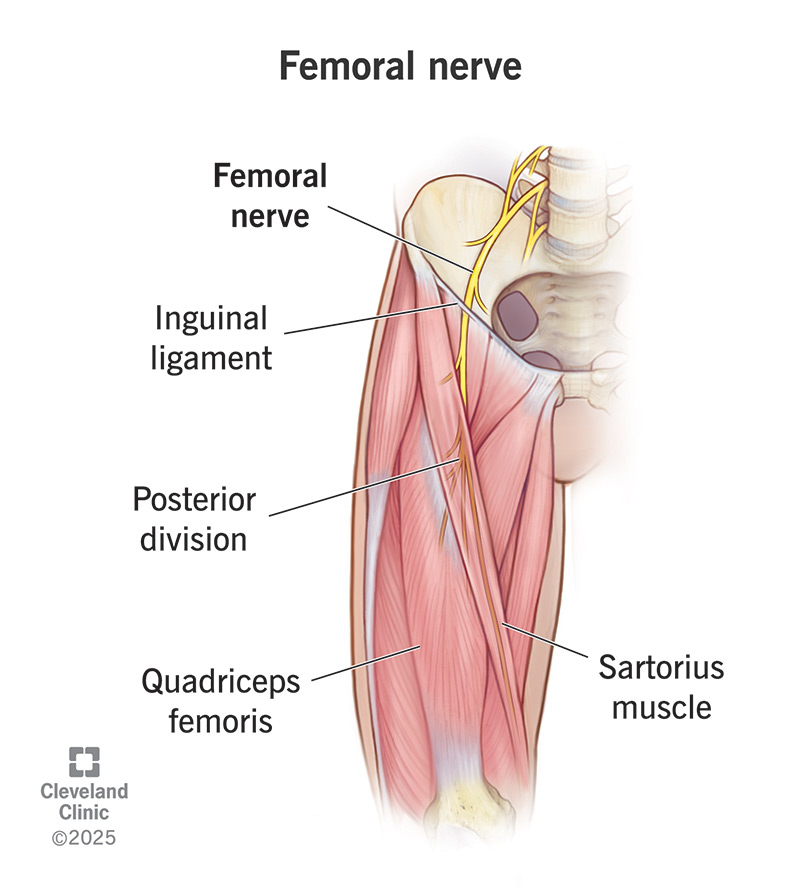Your femoral nerve is the largest of the five nerve branches of your lumbar plexus. This network of nerves is in your lower spine. You have a femoral nerve on each side of your body that helps you bend and straighten your hips and knees. It also sends touch, pain and temperature sensations from your legs to your brain.
Advertisement
Cleveland Clinic is a non-profit academic medical center. Advertising on our site helps support our mission. We do not endorse non-Cleveland Clinic products or services. Policy

Your femoral nerve is one of the largest nerves in your leg. It has a motor function to help you move your hips, legs, ankles and feet. It also has a sensory function, helping you feel touch, pain and hot or cold temperatures.
Advertisement
Cleveland Clinic is a non-profit academic medical center. Advertising on our site helps support our mission. We do not endorse non-Cleveland Clinic products or services. Policy
Your femoral nerve is part of your peripheral nervous system. This system sends signals from your brain to your lower limbs, upper limbs and some organs.
If you experience pain, numbness or weakness in your legs or feet, reach out to a healthcare provider. They can determine if you have a specific issue in the nerves of your leg and develop a treatment plan for you.
Your femoral nerve is one of two major leg nerves that provide motor (movement) and sensory functions to your lower limbs. Your femoral nerve works for the front of your leg, while your sciatic nerve serves the back of your leg.
Your femoral nerve:
Your femoral nerve:
Advertisement
Near your pubic bone, your femoral nerve branches into your anterior (superficial) femoral nerve and your posterior (deep) femoral nerve. Each of these branches provides certain motor or sensory functions:
Conditions that can damage or affect your femoral nerve include:
Pain that radiates from your back and hips into your legs (radicular pain) is a common sign of femoral nerve damage. Other symptoms include:
You should call a provider if you experience:
Your femoral nerves are a vital part of your peripheral nervous system. They help provide movement and sensation to your hips and legs. Damage to your femoral nerves can cause pain, numbness and weakness that can impact your ability to work, participate in hobbies and perform everyday tasks. If you’re experiencing any of these symptoms, don’t hesitate to contact a healthcare provider. They can find the source of your pain and offer symptom relief and other solutions.
Advertisement
Cleveland Clinic’s primary care providers offer lifelong medical care. From sinus infections and high blood pressure to preventive screening, we’re here for you.

Last reviewed on 04/06/2025.
Learn more about the Health Library and our editorial process.